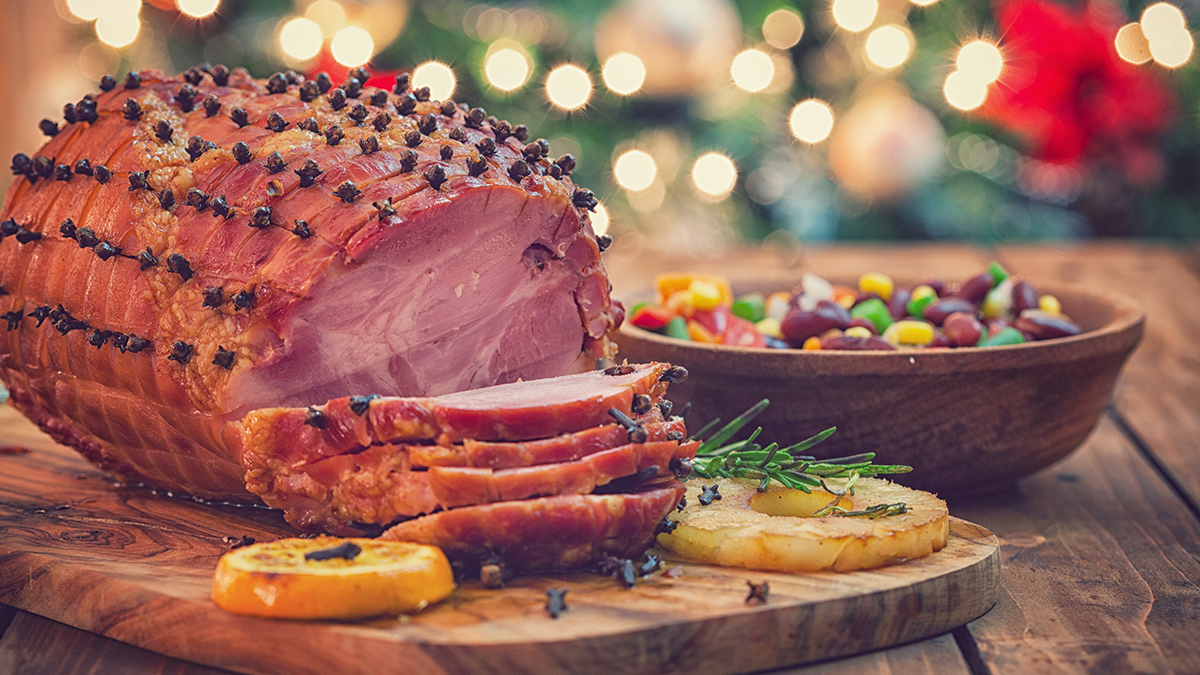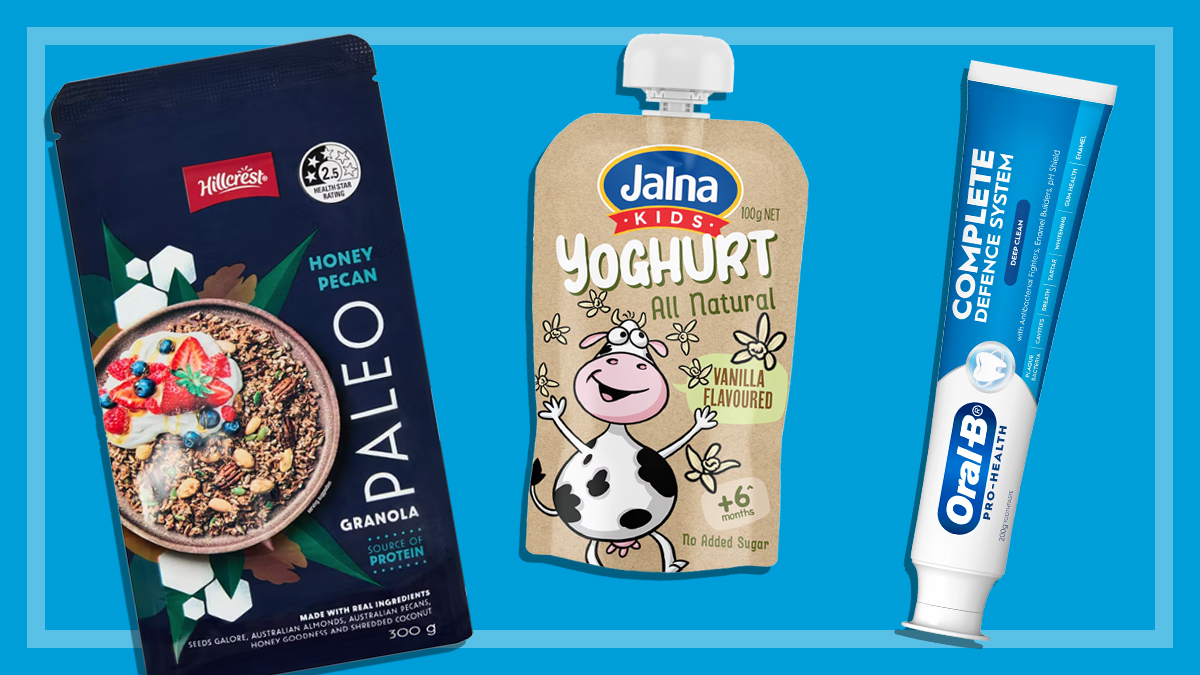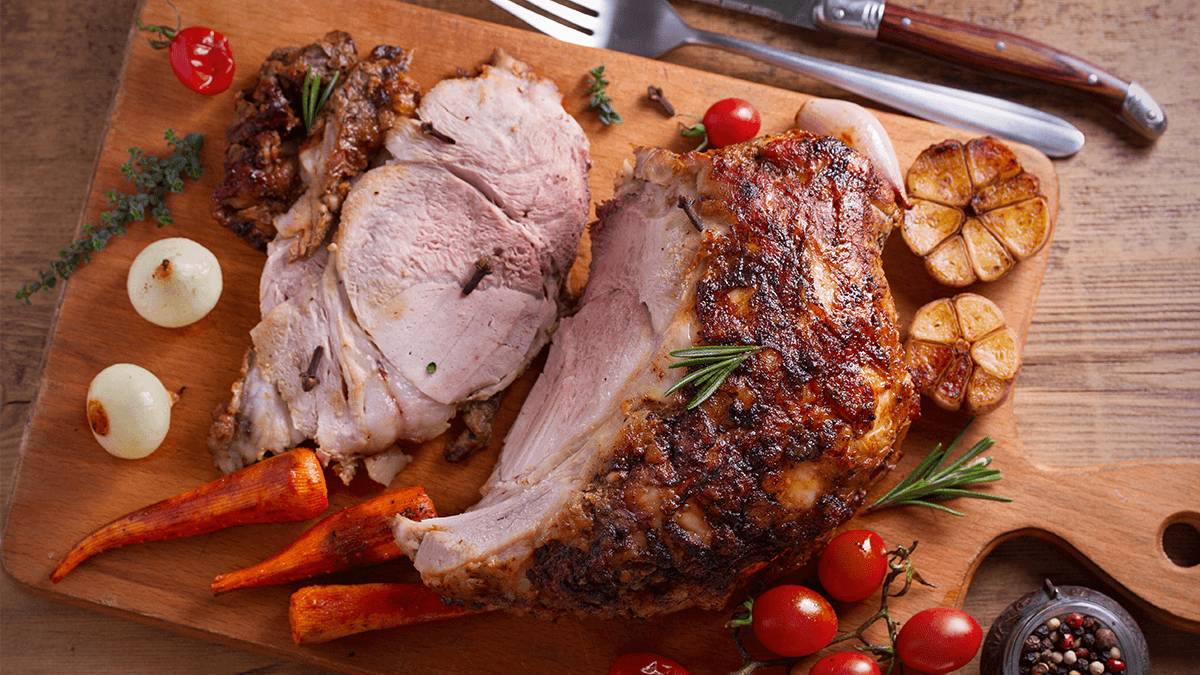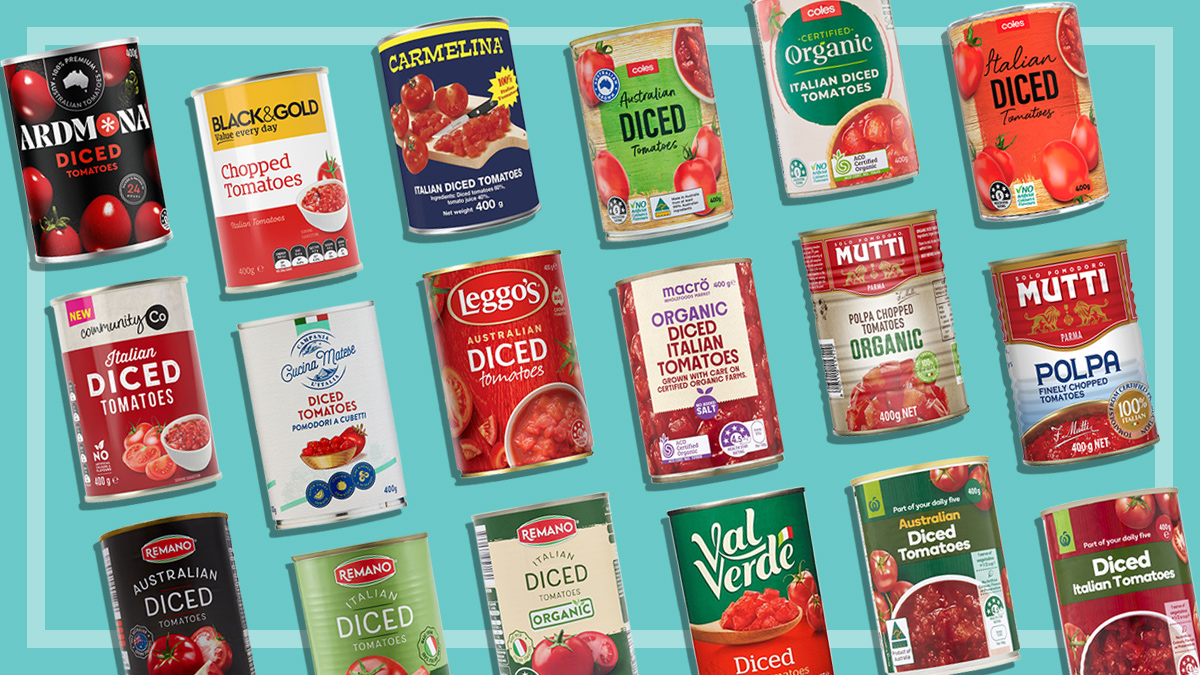Get our independent lab tests, expert reviews and honest advice.
How to make the best pumpkin soup
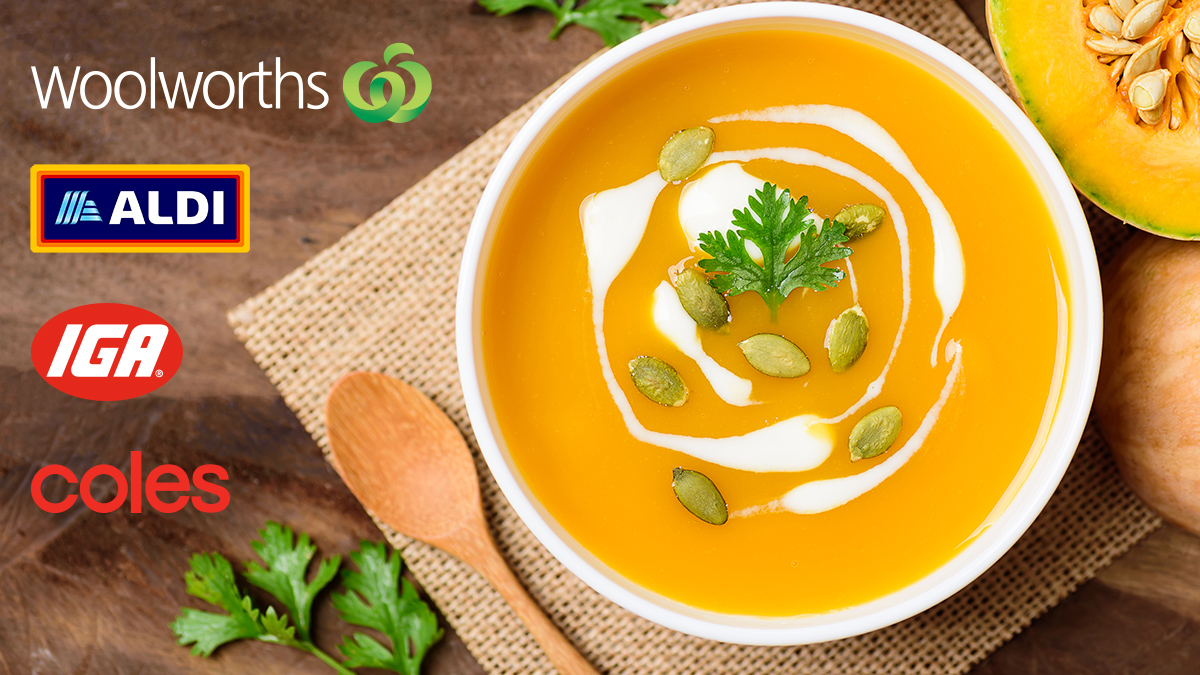
Need to know
- Even with the same ingredients and methodology, you can get very different results
- Price is not necessarily an indicator of quality when it comes to your soup ingredients
- The right produce is key, so choose carefully
For more than a year, we’ve been comparing the prices of different items at the four major supermarkets. While we’ve strived to match the products in our basket so that they have similar ingredients, countries of origin and pack size, there are inevitably small variations, and this can affect the perceived quality.
While the focus of our quarterly basket survey is on price, we also recognise that quality is important – if something costs less but is of poor quality, you may not feel that you’ve got value for money.
Our results showed the huge variation that different products and fresh produce can have on the outcome of your cooking
It’s also true, as we know from our decades of product testing, that paying more doesn’t necessarily mean you get a better product, so figuring out which products are best is not as simple as paying more to get better quality.
To evaluate the quality of ingredients purchased across the four major supermarkets, we bought the essentials required to make a winter classic – pumpkin soup. All of the ingredients were featured in our most recent grocery basket comparison.
CHOICE home economist Fiona Mair cooked up four separate batches using the same recipe (shared below), and lucky CHOICE staff blind taste-tested the finished dishes.
Our results showed the huge variation that different products and fresh produce can have on the outcome of your cooking.
Which supermarket’s ingredients make the best pumpkin soup?
We purchased ingredients from each of the major supermarkets and prepared soup following the same recipe for each batch. We then conducted a blind taste test of each version to find out which won on flavour.
Woolworths: Pumpkin + onion + stock = $7.84 1st place
Aldi: Pumpkin + onion + stock = $6.20 2nd place
IGA: Pumpkin + onion + stock = $10.86 3rd place
Coles: Pumpkin + onion + stock = $7.91 4th place
Which pumpkin soup was superior?
Our tasters told us that the pumpkin soup prepared using the Woolworths’ ingredients was the best of the bunch, followed closely by Aldi’s.
The soups made from IGA and Coles ingredients were a more distant third and fourth.
Many commented on how much each sample differed, despite the same recipe being used to prepare each batch
Many taste-testers commented on how much each sample differed, despite the same recipe being used to prepare each batch. Which just goes to show how much impact your ingredients will have on the result.
In terms of price, the pumpkin, stock and onion from Woolworths cost $7.84, and at Coles the price was $7.91. The same products cost $6.20 from Aldi and $10.86 from IGA. These calculations are based on the price of 1.5kg of pumpkin and the full litre of stock.
Ingredients
- 1.5kg butternut pumpkin, peeled and cut into 5cm chunks
- 1 tablespoon olive oil
- 1 brown onion, peeled and diced sliced thinly
- 2 tablespoons butter
- 500 to 700ml vegetable stock (adjust according to the desired thickness of the soup)
- 1 tsp salt
- ½ tsp black pepper
Preparation method
- Preheat oven to 200°C fan-forced.
- Place the pumpkin pieces into a baking tray with the olive oil. Rub the oil over the pumpkin pieces.
- Bake in oven until pumpkin is soft and dark golden brown (approximately 20 min).
- On a medium heat, melt the butter in the saucepan and fry onion until soft (approximately 4 min).
- Add the roasted pumpkin, stock, salt and pepper.
- Bring to the boil, reduce the heat and simmer for 15 min with the lid on.
- Remove from the heat and allow to cool slightly. Then, using a stick blender, blend the soup until smooth and silky.
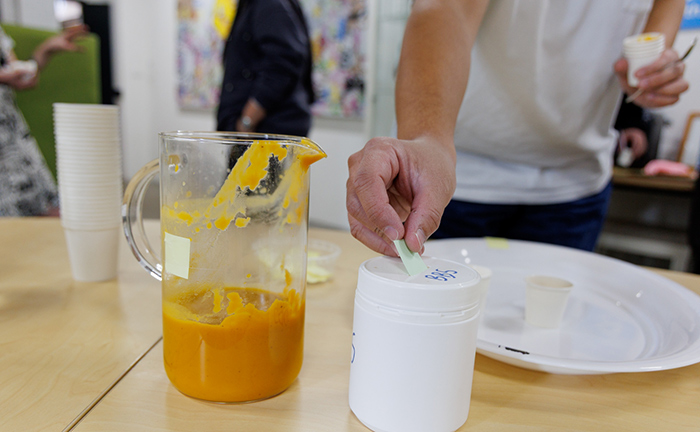
How do the ingredients compare?
While price is one way to look at the products in question, it’s not the only factor that influences purchasing decisions.
For nearly everyone, the quality of the items we buy is also important.
Vegetable stocks
The vegetable stocks from Coles and Woolworths were very similar, with closely matched ingredients and nutritional values. The ingredient lists were almost identical, the sodium levels were just 2mg different, and carbohydrates were essentially the same – just 0.1g different.
The Aldi and Campbell’s (from IGA) vegetable stocks were also very similar to each other, with similar ingredients, sodium levels and carbohydrates.
Woolworths Vegetable Stock
Ingredients: Reconstituted vegetable stock (97%): (water, onion, carrot, celery, tomato, leek, garlic, parsley, black peppercorns, bay leaf, salt), yeast extract, maltodextrin, salt, onion powder, garlic powder, sugar, natural flavour, caramelised sugar syrup, sunflower oil, spice, acacia gum.
Energy/100ml: 27kJ
Sodium/100ml: 302mg
Carbohydrate/100g: 1.4g
Sugars/100g: <1.0g
Coles Real Vegetable Stock
Ingredients: Reconstituted vegetable stock (97%): (water, onion, carrot, celery, tomato, leek, garlic, parsley, pepper, bayleaf, salt, yeast extract), maltodextrin, salt, vegetable powders (onion, garlic), sugar, natural flavours, yeast extract, caramelised sugar syrup, sunflower oil, spice.
Energy/100ml: 33kJ
Sodium/100ml: 300mg
Carbohydrate/100g: 1.5g
Sugars/100g: <1.0g
Chef’s Cupboard Simply Stock Vegetable (Aldi)
Ingredients: Vegetable stock (96%): (Water, carrots, celery, cabbage, garlic, onions, bay leaves, parsley, thyme), sugar, salt, glucose, yeast extract.
Energy/100ml: 34kJ
Sodium/100ml: 539mg
Carbohydrate/100g: 1.9g
Sugars/100g: 1.9g
Campbell’s Real Stock Vegetable (IGA)
Ingredients: Vegetable stock (97%): (Water, carrots, celery, cabbage, garlic, onions, bay leaves, parsley, thyme), sugar, salt, glucose.
Energy/100ml: 34kJ
Sodium/100ml: 542mg
Carbohydrate/100g: 1.9g
Sugars/100g: 1.8g
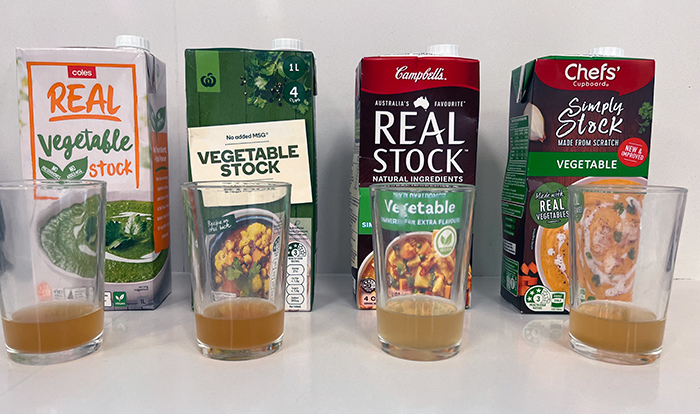
Choosing the right produce
Pumpkin
It might seem obvious, but a good pumpkin is key to producing a good pumpkin soup. An underripe pumpkin may have played a part in the poor showing of the soup prepared from Coles’ ingredients.
“Pumpkins can be underripe, and a butternut pumpkin that’s harvested too early will have a higher moisture content and a less developed flavour compared to a fully ripe one,” says Fiona.
A butternut pumpkin that’s harvested too early will have a higher moisture content and a less developed flavour
When choosing your pumpkin, look for one with a firm, dry stem that feels heavy for its size. The skin should be a deep beige colour and should sound hollow when you tap on it.
“The Coles pumpkin was light compared to the other supermarket pumpkins and seemed to be underripe, which meant the flavour was limited,” she says.
Onion
The other variable in our taste test was the onion.
While preparing the soups, Fiona saw a noticeable difference in the caramelisation achieved, with the onion from Woolworths browning and caramelising more quickly.
She also noticed that the Woolworths onion had drier, darker roots than those bought at the other stores, indicating it could have been older than the others.
As onions age, the process of converting starch to sugar occurs, making them sweeter
“Older onions tend to have higher sugar content and will caramelise faster. As onions age, the process of converting starch to sugar occurs, making them sweeter,” says Fiona.
“This was noticeable in the initial cooking of the onions in the butter and contributed to the sweetness of the soup.”
Fiona’s tips for an exceptional soup
For Fiona, the quality of the produce is the key to cooking success.
“Good-quality vegetables will produce an overall better flavour,” she says. “Don’t settle for less. After all, you are putting your time, energy and money into making a meal for yourself, your family or your friends.”
She also suggests that you may not even need to use vegetable stocks.
“When making a vegetable soup – whether it is a pumpkin, potato and leek, or minestrone – consider replacing the vegetable stock with water and include extra vegetables instead,” Fiona advises.
“Flavours such as garlic can be added, but should be used sparingly as they can be overpowering,” she adds.
Some pre-packaged vegetable stocks could possibly ruin your dish with overpowering dried seasonings and excess salt
Fiona Mair, CHOICE home economist
Fiona also recommends you add carrots for sweetness and fresh herbs, rather than dried, for a fresher flavour.
“An extra onion will also add flavour and sweetness when softened and caramelised first,” she says.
Fiona also notes that another benefit of omitting the store-bought stock is that you control the amount of salt that you add and therefore the amount of sodium in your food.
“Some pre-packaged vegetable stocks could possibly ruin your dish with overpowering dried seasonings and excess salt,” she warns.

